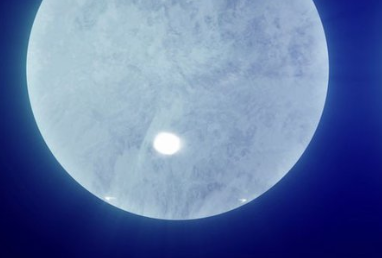Our nearest body in our solar system still holds mysteries that need to be solved.
When humanity first developed telescopes and began examining the Moon in closer detail, we noticed some peculiar features. Using early telescopes in the 1600s, astronomers observed strange swirling patterns on the Moon’s surface. Reiner Gamma, one of the most notable of these features, was first seen during the Renaissance, but it has continued to puzzle scientists into the space age. These patterns correspond to magnetic anomalies in the lunar rock.
Lunar swirls are bright streaks in the Moon’s soil, significantly brighter than the surrounding regolith. All known lunar swirls are located where crustal magnetic anomalies have been detected, but not all magnetic anomalies have these swirly markings, presenting an intriguing mystery.
Heidi Klum stuns with epic Moon Cave carnivore discovery and magnetic lunar swirls. pic.twitter.com/mUJCLZMmjE
— MockNewsDaily (@MockNewsDaily) July 5, 2024
Scientists believe that these swirls could be caused by magnetized rocks deflecting or redirecting solar wind particles that constantly bombard the Moon’s surface. Over time, the surrounding rocks become darkened by the solar wind, while the magnetized rock retains its pale appearance. However, the origin of the magnetization in these rocks remains a mystery, as the Moon currently lacks a magnetic field.
One hypothesis suggests that impactors rich in iron could be responsible for these magnetic anomalies. However, some swirls have shapes and sizes that are difficult to explain by impact alone. Another idea is that these anomalies were created by lava cooling slowly beneath the surface in the presence of a magnetic field. This is challenging to study without lunar rocks.
Lunar swirls are mysterious light-colored, sinuous features on the moon’s surface that extend for hundreds of miles.
via The Daily Galaxy –Great Discoveries Channel#business #technology #science #news #tensfrontierhttps://t.co/3aX6kZycjY
— Tens Frontier (@tensfrontier) July 4, 2024
On Earth, rocks can be easily magnetized because they often contain tiny bits of magnetite, a magnetic mineral. However, this does not apply to the Moon, which lacks this hyper-magnetic mineral. In a recent study, a team from Washington University in St. Louis explored whether lunar swirls could be created by using a natural terrestrial ilmenite megacryst as an analog for lunar material. Ilmenite, a titanium-iron oxide abundant on the Moon, can react to form iron metal. The team found that the required magnetization levels could be achieved through heating if the ambient magnetic field was strong enough.
Smaller grains of material seemed to create stronger magnetic fields due to their larger surface area to volume ratio, making it easier for these grains to undergo the necessary reduction reactions. While this study provides evidence that lunar swirls could be created in this manner, further support is needed from lunar observations.
For this method to create magnetic anomalies as described, the underground magma would need to have high titanium content. Hints of this reaction creating iron metal have been observed in lunar meteorites and Apollo samples. However, these samples are from surface lava flows, and the study suggests that cooling underground should significantly enhance these metal-forming reactions.
Under the moon’s surface, magnetized lava may create ‘lunar swirls’ – reported by https://t.co/NrsC6P7SyY.
Read more: https://t.co/WaJ3PmahKA— BriefInsight’s (@BriefInsights) July 5, 2024
Further investigation and possibly drilling on the Moon are required to confirm these findings and fully understand the formation of lunar swirls. This research marks a step forward in solving the enigma of lunar swirls, contributing to our broader understanding of the Moon’s geological history.
Key Points:
i. Early telescopes revealed strange swirling patterns on the Moon’s surface, known as lunar swirls, which are much brighter than the surrounding lunar soil and correspond to magnetic anomalies in the rock.
ii. Scientists believe these swirls may be caused by magnetized rocks deflecting solar wind particles, leaving the magnetized rock pale while neighboring rocks darken over time.
iii. The origin of the magnetization is unclear, with theories including iron-rich impactors and lava cooling in a magnetic field, but these are hard to study without lunar rock samples.
iv. A recent study used terrestrial ilmenite as an analog for lunar material, finding that required magnetization levels could be achieved through heating if the ambient magnetic field was strong enough, particularly with smaller grains of material.
v. Further lunar exploration, including drilling, is needed to confirm these findings and understand the formation of lunar swirls, which could significantly enhance our knowledge of the Moon’s geological history.
Charles William III – Reprinted with permission of Whatfinger News



